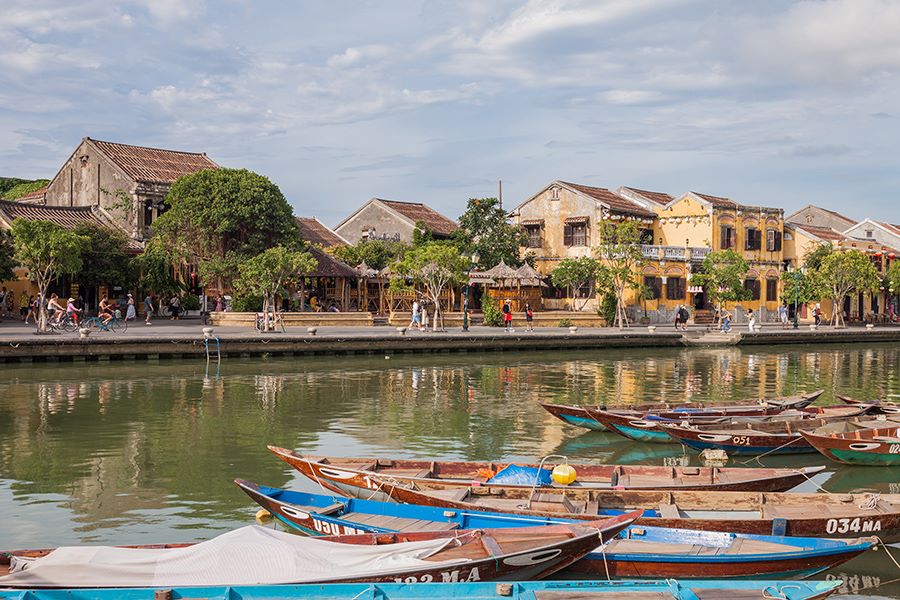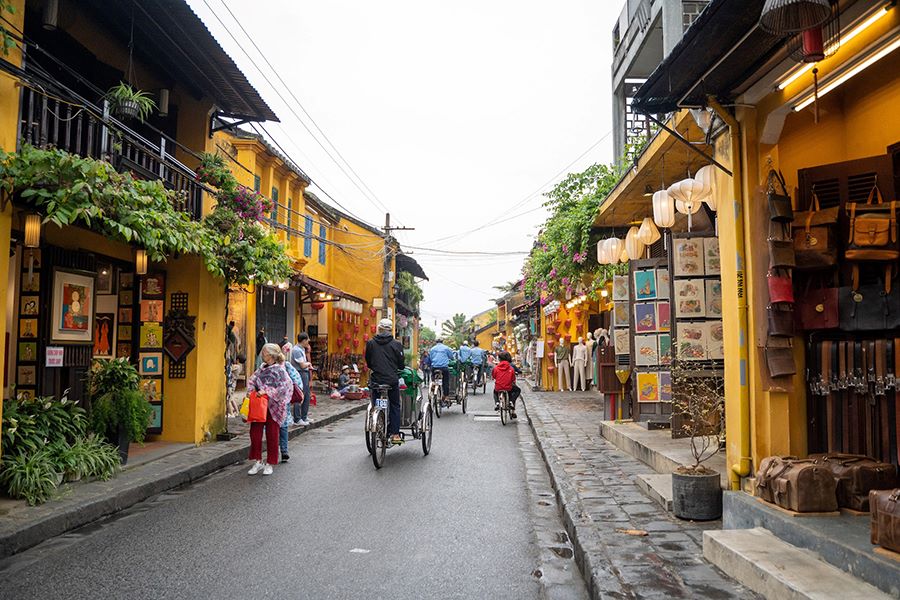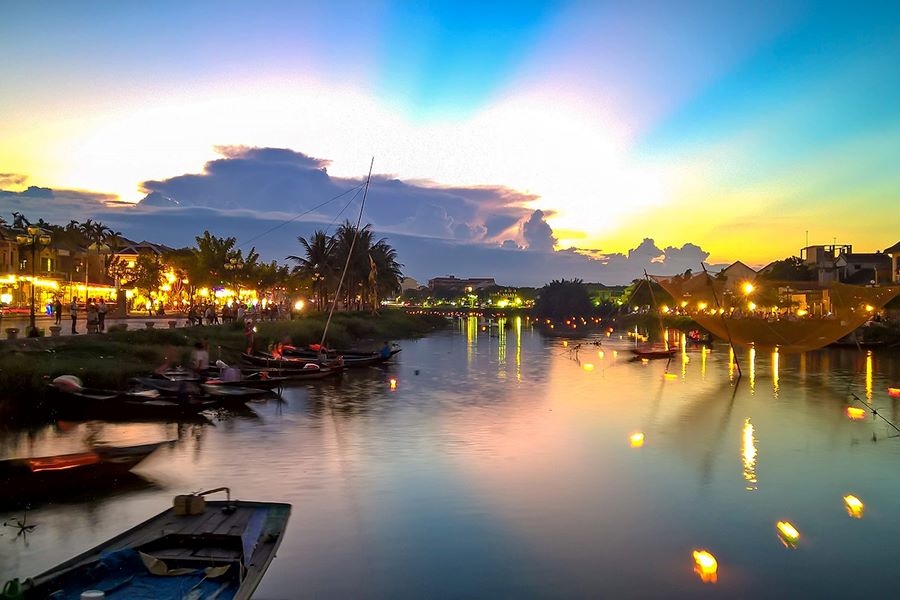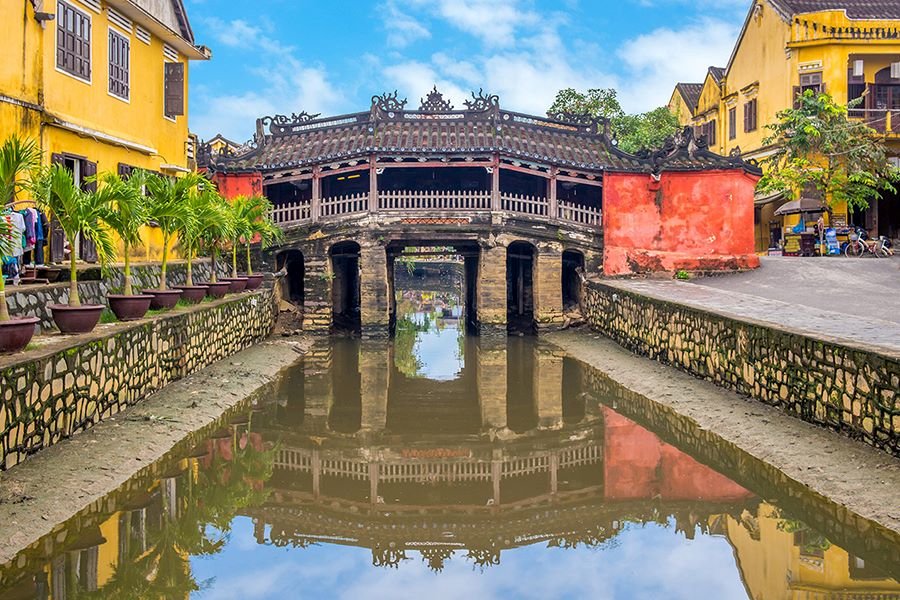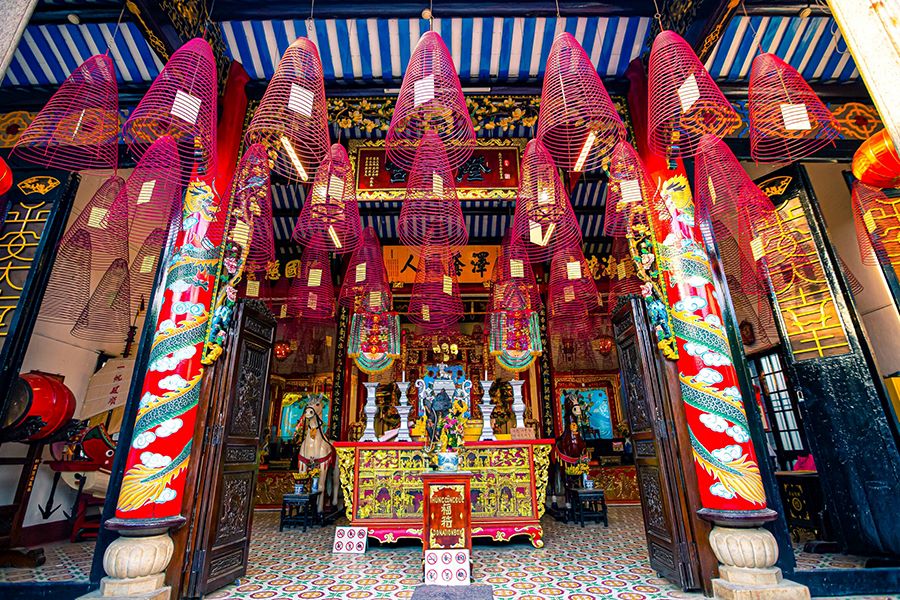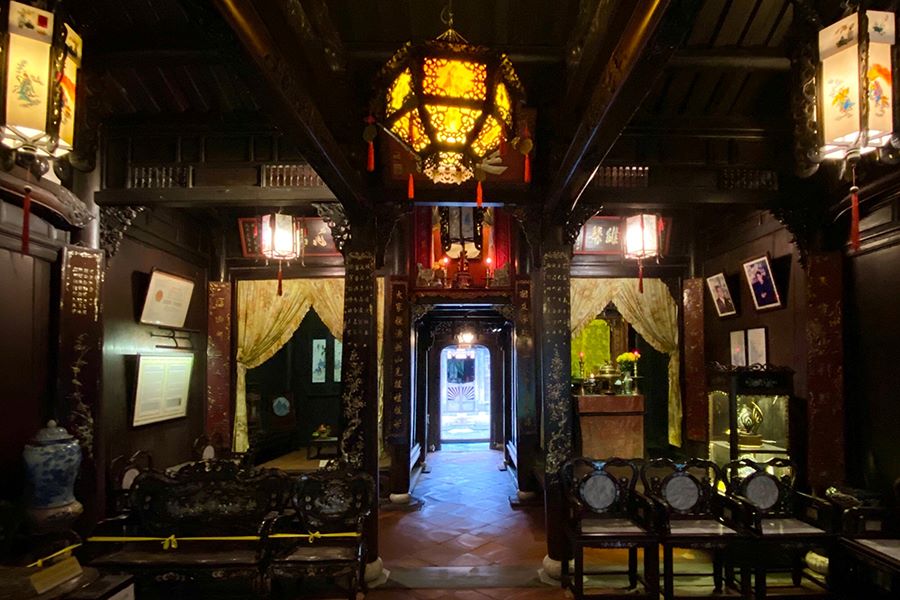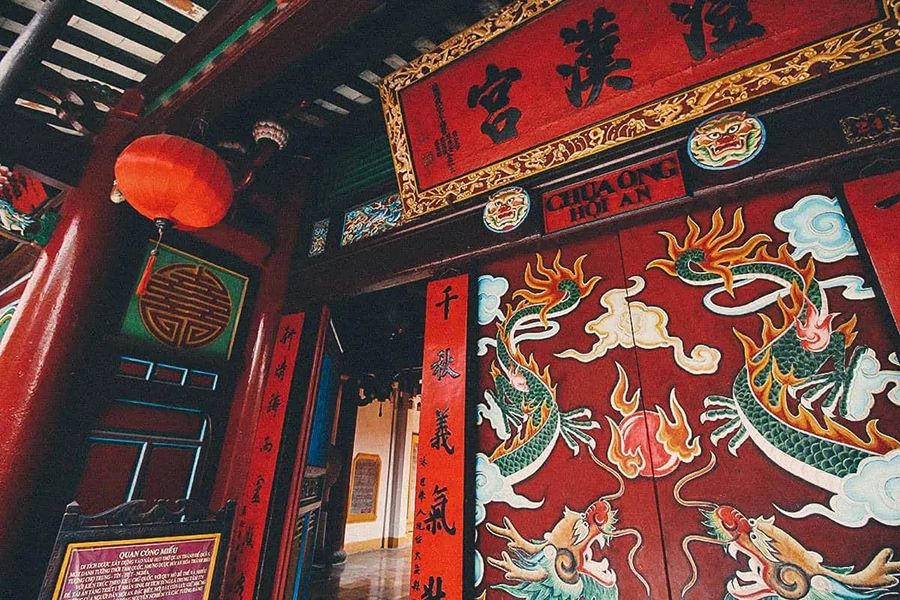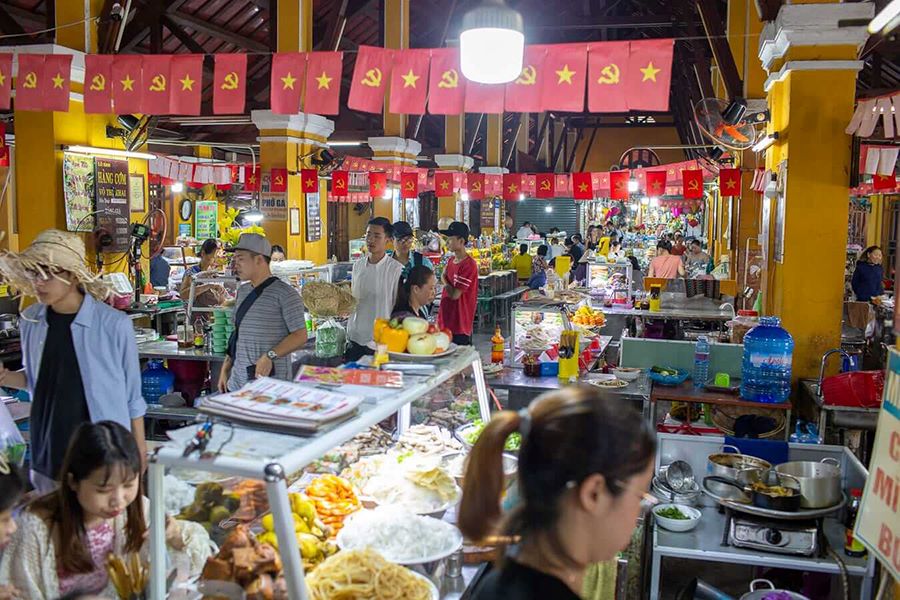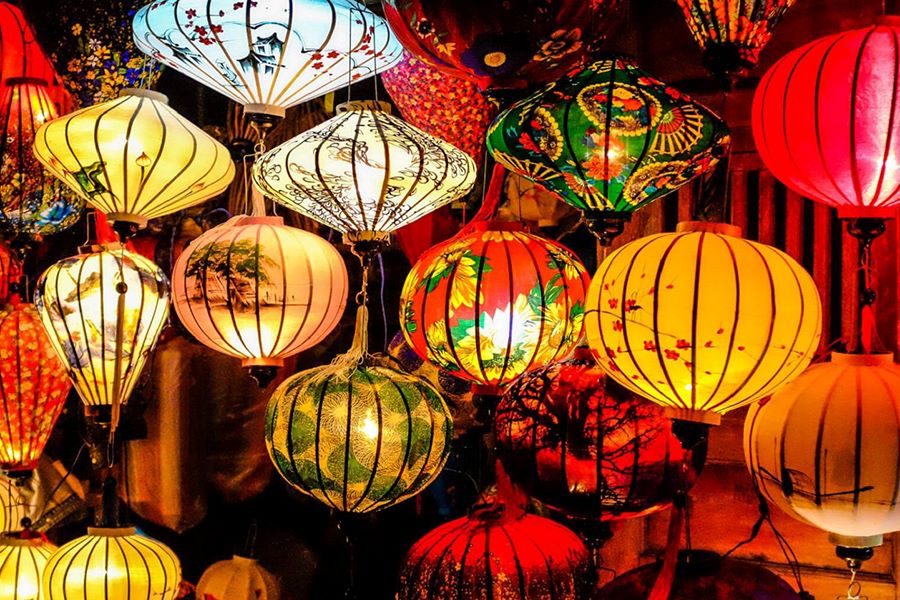Hoi An Ancient Town still has its distinct beauty lying on every street corner, on every roof, and even in the small streets. This place has an ancient grace with features that cannot be found anywhere else. Coming here, visitors can feel the affection of the friendly locals.
With its natural landscapes, and beautiful beaches, as a Chinese-Vietnamese-Japanese cultural melting pot of architecture and culinary specialties, Hoi An Ancient Town has become a leading tourist destination, attracting people around the world from the 80s to the present. You would not want to miss it for the world! Note down the following tips from Vietnam DMC for an amazing trip to Hoi An old town!
About the Ancient Town in Hoi An, Vietnam
Introduction of Hoi An Ancient Town
Just downstream from Thu Bon River, Hoi An Ancient Town is located in the heart of Quang Nam Province, about 30 kilometers to the south of Da Nang City. Hoi An, Vietnam is a famous tourist attraction and an architectural relic complex.
The town’s historical significance is deeply rooted in its role as a thriving trading port from the 15th to the 20th century. During this period, Hoi An Ancient Town served as a vital hub for commerce, connecting European merchants with their Asian counterparts. Traders from China, Japan, and Portugal left their indelible marks on the town through a diverse array of architectural patterns. Recognizing the exceptional value of Hoi An Old Town, UNESCO designated it as a World Cultural Heritage site in 1999. This recognition underscores the town’s status as a living museum, showcasing a wide range of construction designs and urban lifestyles from around the world.
Today, Hoi An Old Town has retained its original charm and character, thanks to dedicated conservation efforts. Strict regulations and guidelines have been implemented to ensure that any restoration work or new constructions maintain the town’s pure and oriental medieval style. This commitment to preservation has allowed visitors to experience the ambiance of a bygone era and gain insight into the historical significance of the town. Wandering through Hoi An Old Town, visitors will encounter an array of well-preserved structures, including ancient houses, assembly halls, pagodas, and temples.
Hoi An Ancient Town – Location & Opening Hours
If you just want to take a chill walk around the old town, enjoy Hoi An’s specialties, or take beautiful pictures, there is no entrance fee. However, several cultural monuments require entry tickets:
- Cultural constructions: Quan Cong Temple, Cau Bridge, etc…
- Ancient houses: Phung Hung Ancient House, Duc An Ancient House, etc…
- Church: Church of the Tran family, Church of the Nguyen family.
- Museums
Where to visit: Attractions in Hoi An Ancient Town
Hoai River
Hoai River is a tributary of Thu Bon River which flows across Hoi An City and connects to other tourist attractions. A chilling boat trip on the Hoai River is a popular activity on tourists’ must-do list. It is highly recommended that you go to Hoi An Ancient Town at night as with the lights from the houses, the whole riverbank becomes a glowing fairyland. Visitors can feel the peaceful, gentle, and romantic vibe of Ancient Town Hoi An.
Lanterns released on the Hoai River are also a meaningful ritual as it is to express gratitude to ancestors and to wish for a prosperous year. Full moon days (the 1st and 15th of the month according to the lunar calendar) are when “Old Town Hoi An trades its electric lights for traditional colorful lanterns”. Hoai River twinkles with the soft light of the lanterns, while thousands of candlelit paper flowers float across the water at night.
Japanese Covered Bridge (Chua Cau)
Your trip to Hoi An Ancient Town will be incomplete if you miss out on the Japanese Covered Bridge, one of the most alluring attractions in Hoi An. Also known as the Japanese Temple, the Covered Bridge is adjacent to Nguyen Thi Minh Khai Street and Tran Phu Street. The bridge is an excellent example of traditional Eastern architecture. Despite being built by Japanese merchants around the middle of the 16th century, through restoration, the Japanese Covered Bridge has become a harmonic architectural combination between Vietnamese, Japanese, and Chinese cultures.
From the distance, the Covered Bridge stands out with a rainbow-like softly curved roof brightening up a corner of the ancient yet modern, quiet yet vibrant old town. The entire pagoda and bridge are made of vermilion wood, carved with many meticulous Japan-infused details. In the evening, when the lanterns are lit up, the bridge’s shadow is imprinted on the water’s surface, shimmering amid the hustle and bustle of Hoi An.
Assembly Halls
Cantonese Assembly Hall
Built in 1885, the Cantonese Assembly Hall is located in the center of the old town of Hoi An. This assembly hall is a harmonious blend of materials of wood and stone. This place conserves many ceramic artifacts, which simulate and document the cultural life of the Cantonese community in Hoi An.
Fujian Assembly Hall
Among the 5 ancient assembly halls, Fujian, located at 46 Tran Phu, is the largest and most well-known. Visitors tend to light large incense rings and often hang wishing paper sheets to pray for health and fortune. The Hall was granted a national historical-cultural relic certification (February 17, 1990), adorning Hoi An ancient urban architecture.
Trieu Chau Assembly Hall
Trieu Chau Assembly Hall was built by the Chaozhou community in 1845 to worship the god Phuc Ba for safe voyages and smooth sailing. Architectural motifs are decorated according to folk legends, many of which are embossed with porcelain.
Ancient houses
Tan Ky Old House
This was the first house to be honored as a national heritage site and is also frequently visited by various governors. Over centuries, even after the historic flood of 1964, the ancient house remains miraculously intact. The wooden East Asian-inspired decorative patterns in the house are delicately carved, indicating the exchange between different architectural styles.
Phung Hung Old House
The house is completely built of expensive ironwood, bearing a traditional beauty and displaying the owner’s well-off life. Phung Hung Old House is the guardian of the rich knowledge about the merchants’ lifestyle in Hoi An old trading port. This ancient house was granted the certificate of historical-cultural relic in June 1993.
Quang Thang House
Built approximately 300 years ago, Quang Thang House is one of the oldest houses in Hoi An Ancient Town. Walking in, you can easily notice stunning wood carvings of peacocks and flowers on the walls. Those sculptures are the products of the Kim Bong carpentry village’s craftsmen, who are renowned for their sophisticated craftsmanship of the Hue garden houses.
Tran Family Chapel
The Tran Family Chapel is one of the famous destinations of Hoi An with its well-preserved antiquated garden architecture, exquisite decoration, intricate details, and numerous valuable antique artifacts. The Chapel is a harmonious and unique mix of 3 different architectural styles: Japanese – Chinese – Vietnamese. For history enthusiasts, a visit to the Tran Family Chapel will be remarkable as the atmosphere and tradition of history are imbued in the relics of the Tran Family.
Sacred temples
Quan Cong Temple
Quan Cong Temple, also known as Kong Pagoda, is one of the biggest Hoi An tourist destinations with great spiritual and religious significance. Tourists are captivated by the extraordinary classical Chinese-influenced architecture of the temple. The ancient shrine with its mossy tiled roof vividly portrayed the traditional charm of cultural heritage in Hoi An.
Ba Mu Pagoda
Since its renovation, Ba Mu Pagoda has become one of the most popular check-in locations. Situated right in the heart of Ancient Town Hoi An, the pagoda is endowed with exquisitely carved golden walls, bunches of flowers blooming with shimmering colors, and a clear lake reflecting the aquarium-blue sky. Blessed with antique charm and an open space, the pagoda is the perfect background for visitors to take impressive photos.
Minh Huong Pagoda
Minh Huong Pagoda is a place of ancestor worship for Chinese people living in Hoi An. It is the only remaining Buddhist temple in the heart of the Ancient Town of Hoi An. It preserves substantially intact wooden sculptures carved by the artisans of Hoi An Kim Bong carpentry village.
Hoi An’s Central Market
Unlike the calmness and tranquility of the old town, Hoi An’s Central Market is a distinct highlight of the ancient town, attracting a large number of tourists thanks to its bustling and lively atmosphere. The Market itself is divided into several areas for fresh seafood, vegetables, fruits, souvenirs… but perhaps the most appealing place must be the food court. Here, visitors will have the chance to try various delicacies of Central Vietnam cuisine such as Cao Lau, Quang noodles, etc.
Museum of Culture
Hoi An Museum of Cultural History is the living proof of a once prosperous trading port. Built in 1989, the museum displays over 212 original artifacts and documents made of diverse materials like ceramics, bronze, iron, wood, paper, etc.
The museum is like a film carefully recording historical events of the heritage land. It continuously keeps track of and witnesses the human, cultural, and historical developments of Hoi An Ancient Town since its early days, from when it was a busy harbor to today – when it is a famous tourist destination.
So, after walking around Hoi An Ancient Town, you should visit the museum and immerse yourself in the flow of history to fully embrace Hoi An.
What to shop for: Traditional souvenirs of Hoi An Ancient Town
Silk Lantern
Lanterns are also a lovely souvenir option as they have become an iconic symbol of Hoi An. From bamboo frames and colorful silk fabrics, the artisans have skillfully created lanterns of all shapes and sizes.
Tailor-made Ao Dai
If you are a fashion enthusiast, Ao Dai is a must-buy item. Ao Dai Hoi An is an excellent blend of traditional and modern beauty, modest yet sophisticated. The tailoring service will offer you the perfect-fitting garment.
Conical Hat (Nón Lá)
Representing Vietnamese traditional beauty, the conical hat is a small gift with great cultural significance. It portrays the elegance of Vietnamese women as well as the agricultural life of the country.
Calligraphy
Tourists normally visit scholars to ask for calligraphy, which is believed to bring good luck for themselves and their loved ones. Wishes for a happy and peaceful year are embedded in each flexible ink stroke of the writers.
To He
Creating To He is a profession with a history of hundreds of years in the ancient town of Hoi An. The small clay “To He” is sculpted into different figures, which are commonly the 12 zodiac animals. Kids will love this Hoi An Vietnam souvenir.
Hoi An Ancient Town with its natural landscapes, rivers, beaches, islands, and traditional delicacies is attracting both domestic and international tourists. The cultural interference made Hoi An a UNESCO World Heritage Site in 1999. A visit to Hoi An will captivate visitors with its extremely rustic and idyllic timeless beauty. So, what are you waiting for? Let’s get this journey started!

